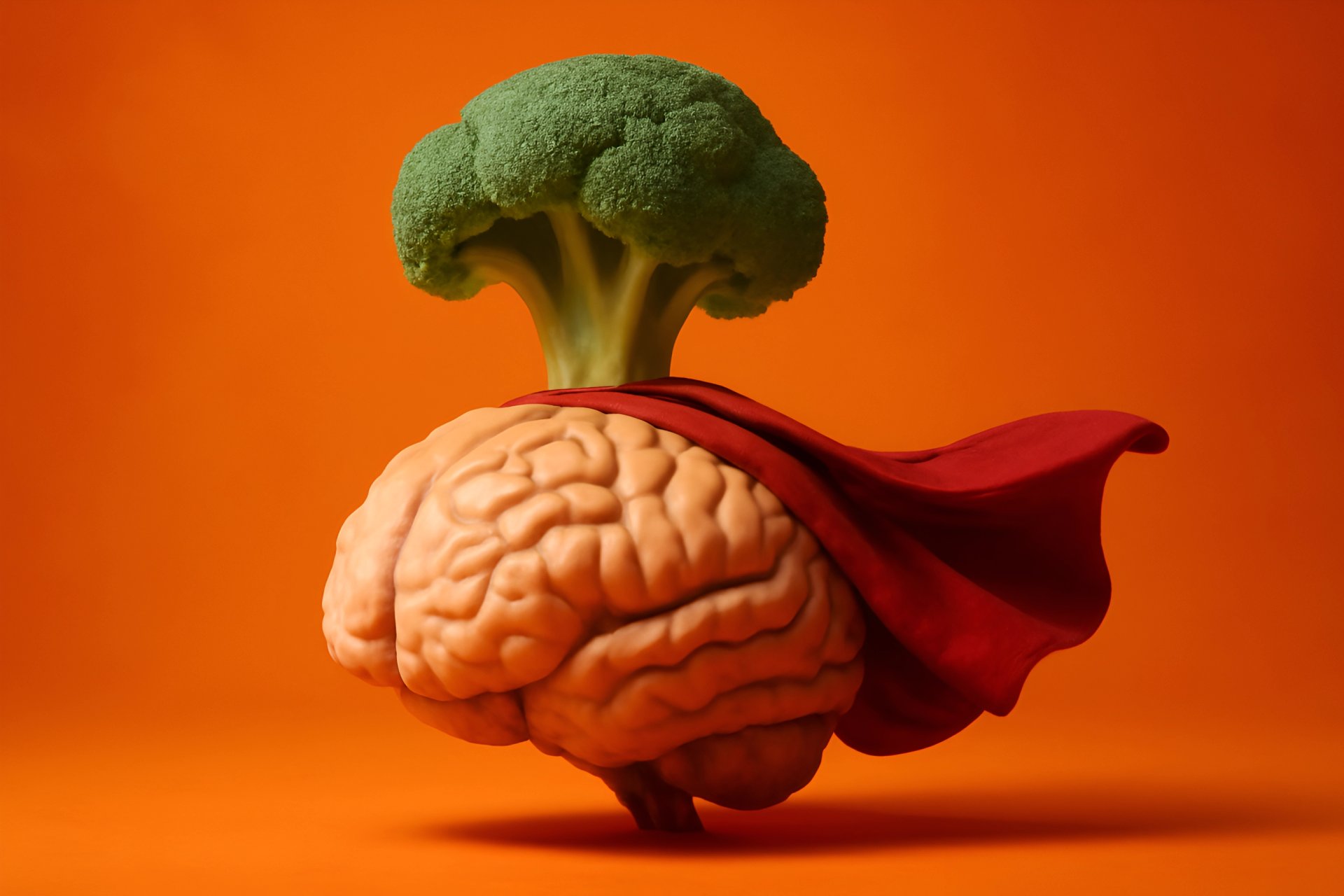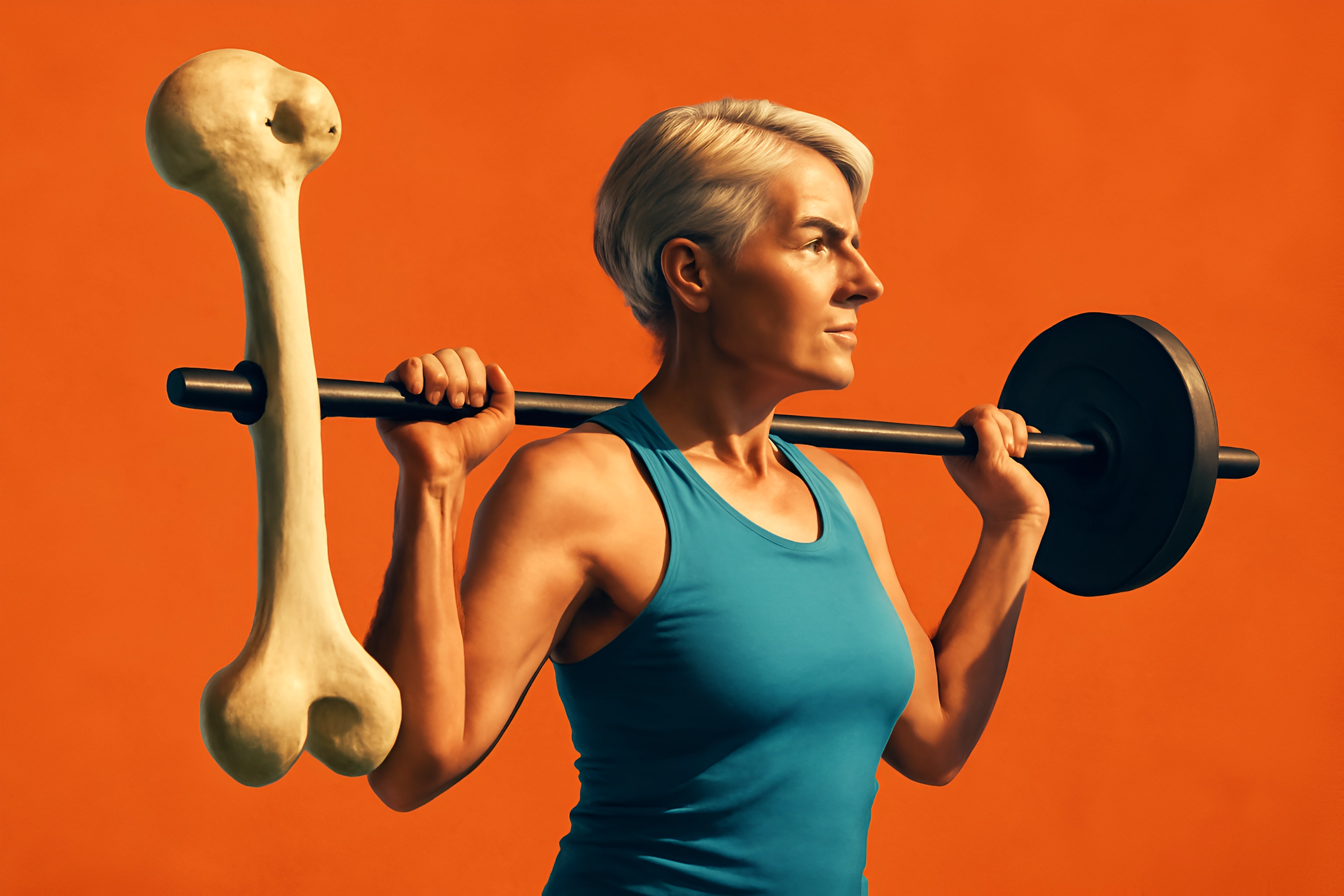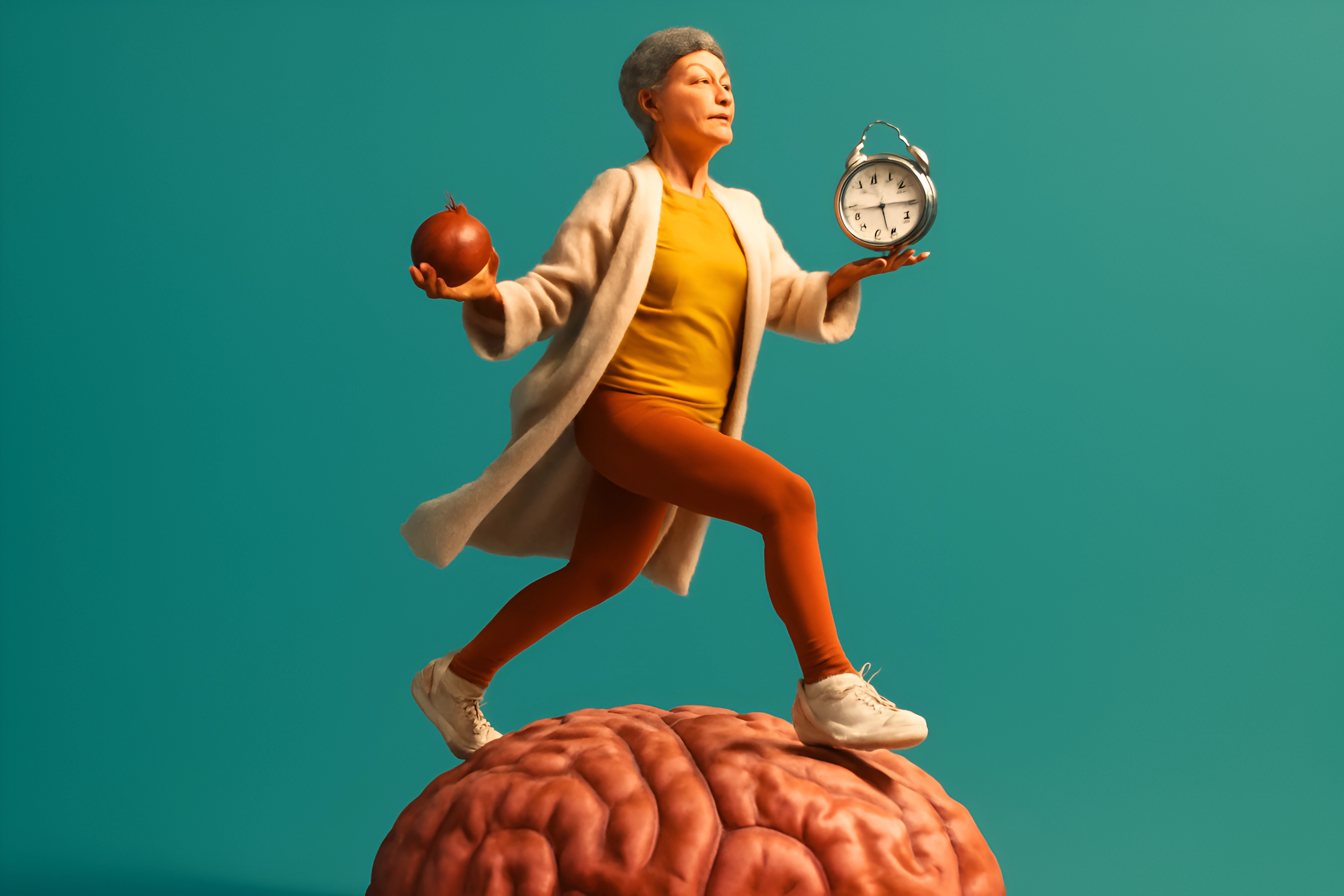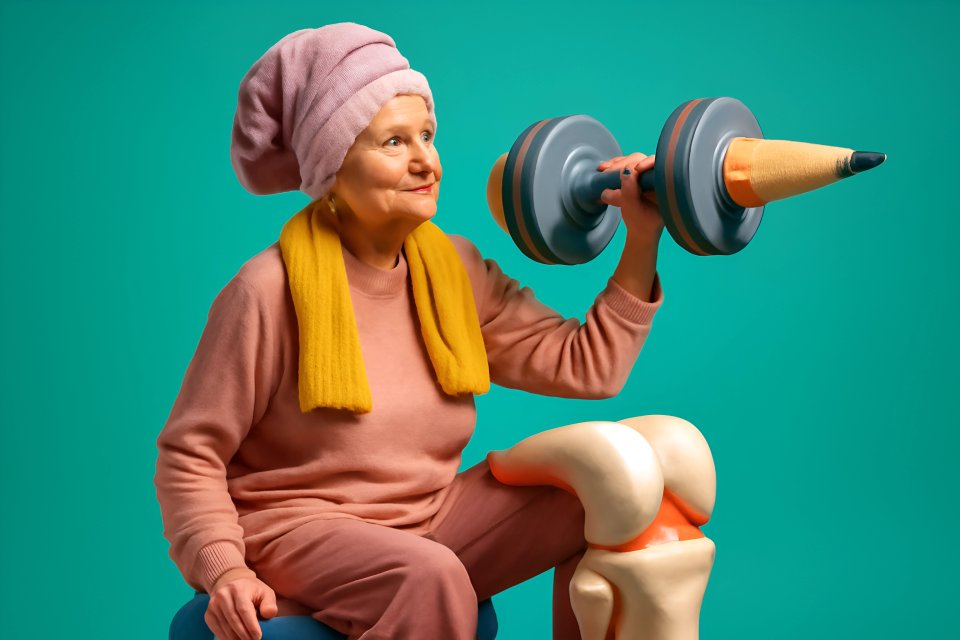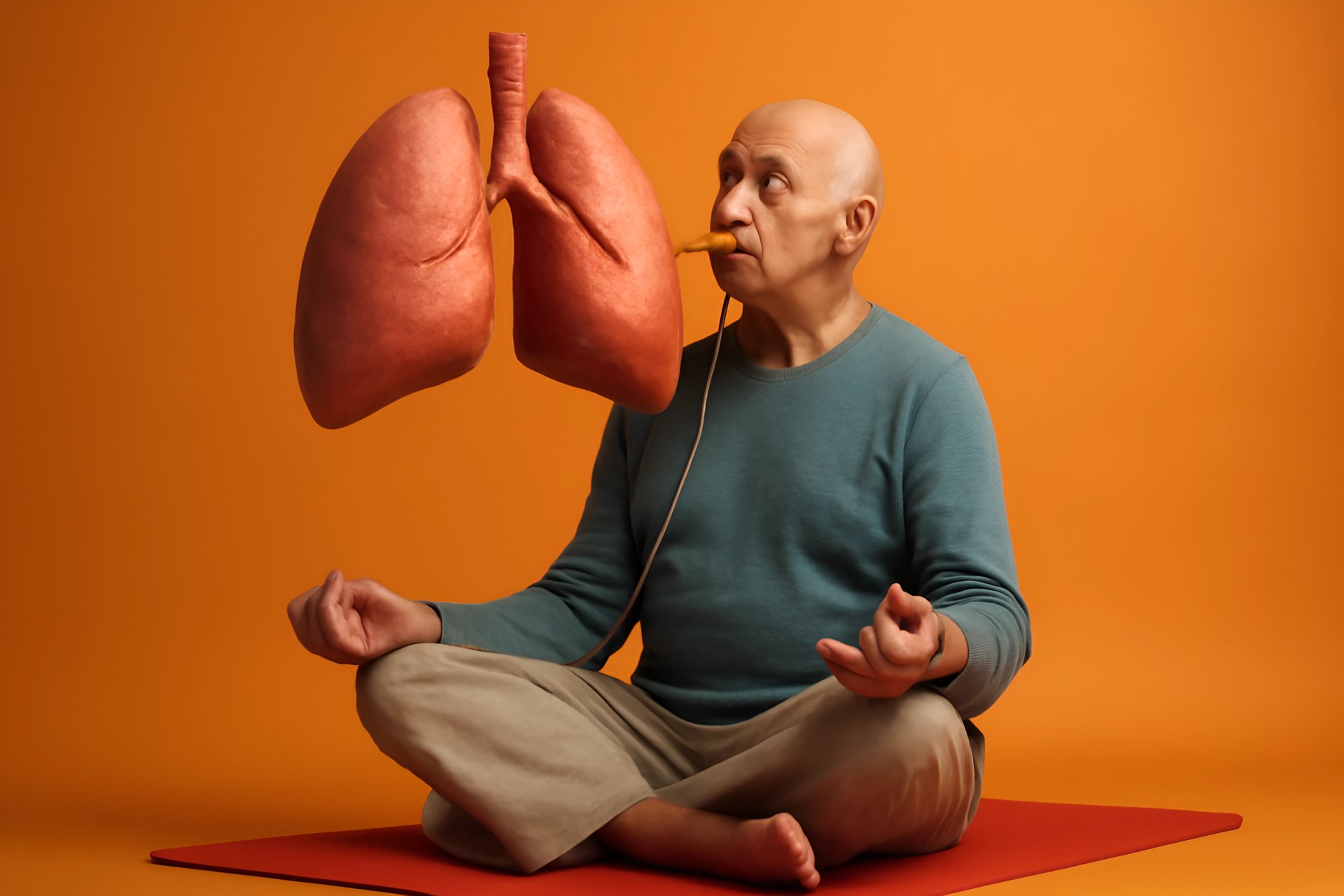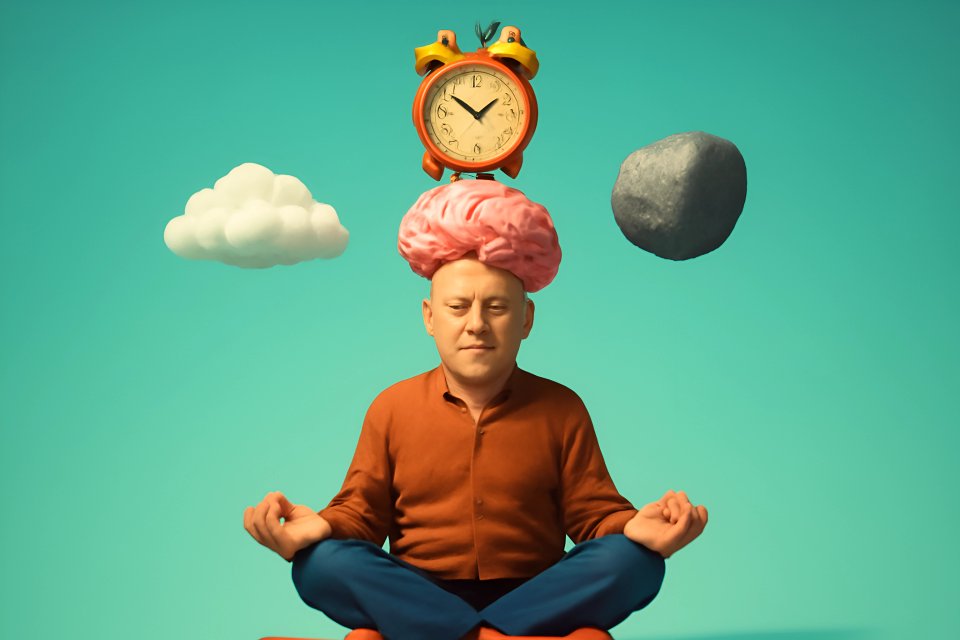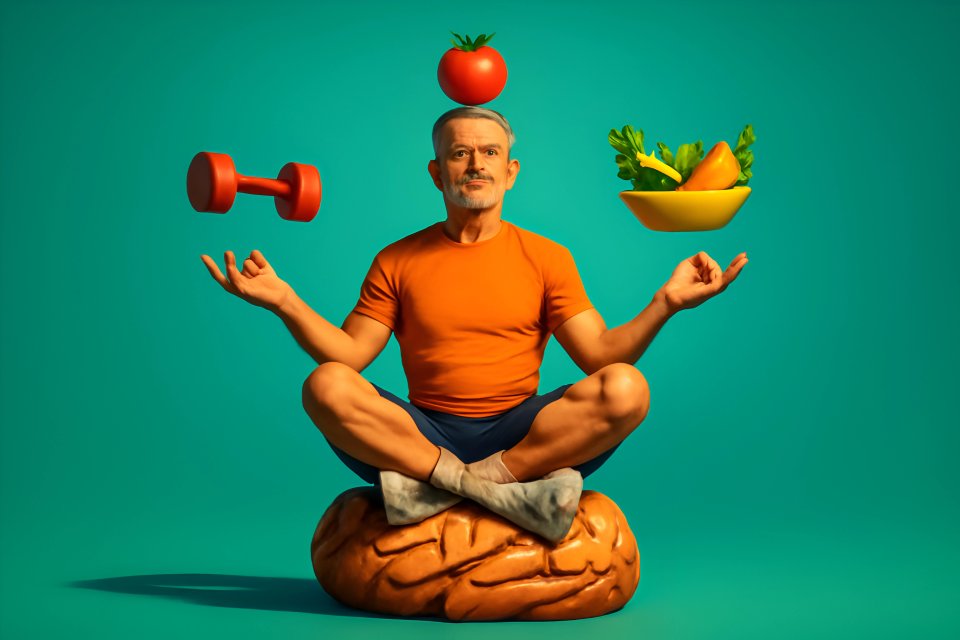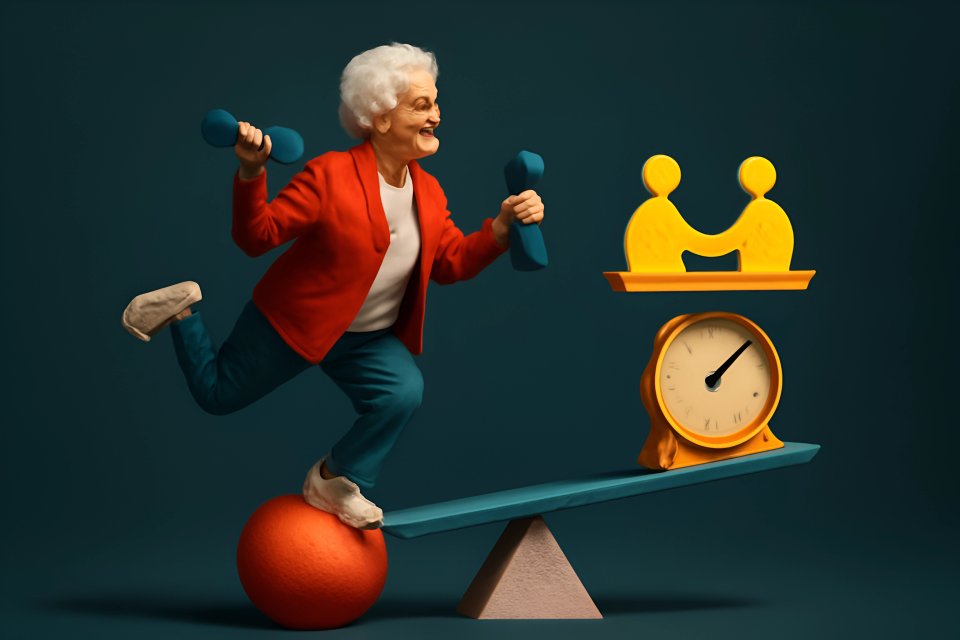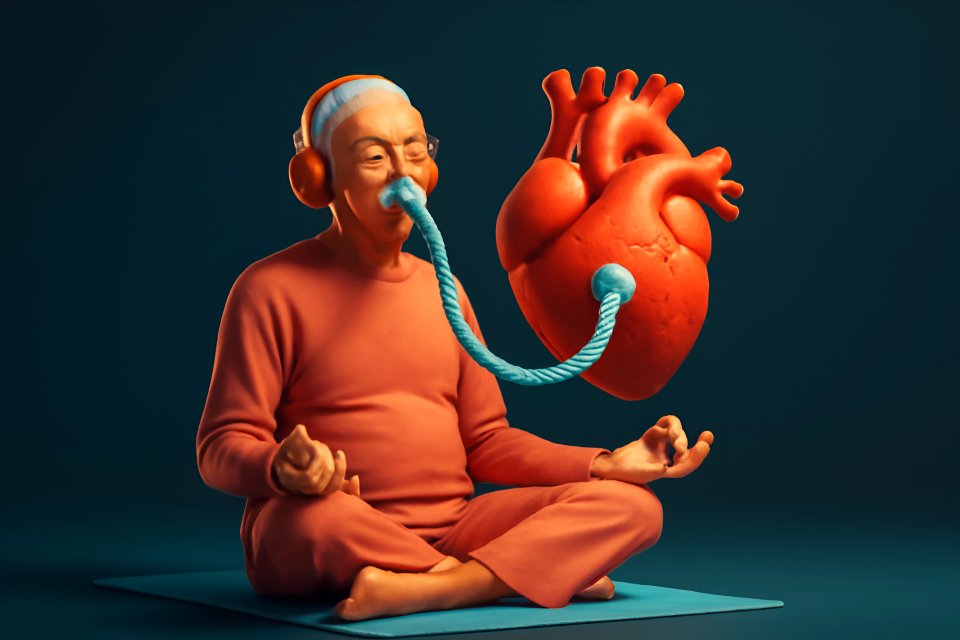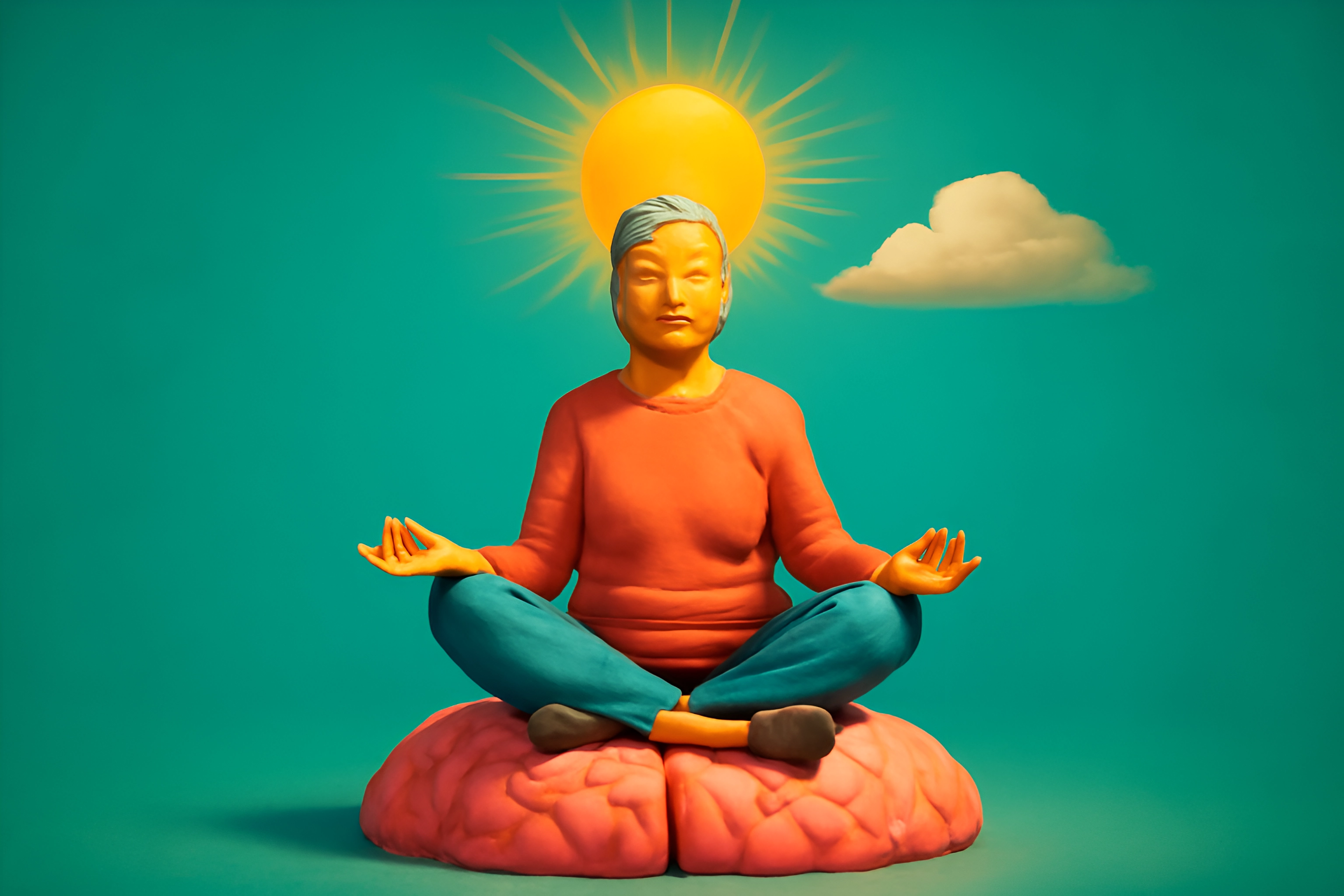
The Noise of Modern Life and the Quest for Calm
Life after 50 is often described as the "golden years," but let's be honest. For many of us, it feels more like a high-stakes juggling act. Between managing our health, navigating changing family roles, planning for the future, and keeping up with a world that seems to spin faster every day, where is the time for peace?
The truth is, the constant hum of responsibility and worry can become overwhelming. The unique stressors that accumulate in this chapter of life—from career shifts to health concerns—can build up, leaving you feeling frayed and exhausted. "Just relax" is easy advice to give, but nearly impossible to follow when your mind is racing.
But what if you had a practical, science-backed toolkit for your mental wellness—one as essential as stretching is for your physical health? This is where mindfulness and meditation come in. In this guide, we'll demystify these powerful practices and provide simple, beginner-friendly techniques you can start using today to reduce stress, improve focus, and cultivate a sense of inner calm. No pretzel poses or silent retreats required.
Why Stress Reduction in Older Adults is Non-Negotiable
Ignoring stress after 50 isn't just a matter of feeling a little on edge; it's a direct threat to your long-term health and vitality. The sources of this stress are unique to our stage of life. We're navigating career changes or the vast new territory of retirement, managing finances with a closer eye on the future, and dealing with health concerns for ourselves or our partners. We might be adjusting to an empty nest or embracing the wonderful chaos of becoming a grandparent.
This isn't just in your head—it takes a physical toll. When you're chronically stressed, your body is flooded with the hormone cortisol, which, over time, can be incredibly damaging. According to the Mayo Clinic, meditation is a simple way to reduce stress that can help manage symptoms of high blood pressure and other conditions. This constant state of high alert can disrupt your sleep, weaken your immune system, and increase inflammation, which can worsen conditions like arthritis.
The impact doesn't stop there. Mentally, chronic stress is the enemy of clarity and joy. It contributes to that frustrating brain fog, fuels anxiety, and can leave you feeling irritable and disconnected from the life you've worked so hard to build. A comprehensive review from the National Institutes of Health confirms that meditation can reduce stress, anxiety, and depression in older adults, making it a non-negotiable tool for protecting your mental and emotional well-being. For a holistic plan, consider how these techniques fit into our guide on Stress Reduction for Seniors: Combining Meditation, Deep Breathing, and Light Exercise.
Demystifying Mindfulness: Your Brain's New Best Friend
So, what is this magic solution? It’s simpler than you think. Let's break down the buzzwords and get to the heart of what these practices can do for you.
Mindfulness is simply the practice of paying attention to the present moment on purpose, without judgment. Think of it like tuning a radio. Most of the time, our minds are filled with static—worries about the future, regrets from the past, and a running commentary on everything. Mindfulness is the act of gently turning the dial until you find a clear station: the sensation of your breath, the feeling of your feet on the floor, the sound of birds outside your window.
Meditation is the formal practice of training that attention. It's the workout you do to strengthen your mindfulness muscle. One of the biggest myths is that you have to "empty your mind" or stop all thoughts. That's impossible. The real goal is to notice your thoughts as they arise and gently guide your focus back when it wanders, over and over again.
The benefits are not just anecdotal; they are backed by solid science. Research shows that these practices are a powerhouse for senior wellness.
- Lowers Blood Pressure: Regular meditation helps calm the nervous system, directly impacting cardiovascular health.
- Improves Sleep Quality: By quieting the mental chatter that keeps you up at night, it paves the way for more restorative rest.
- Enhances Cognitive Function: A study in Frontiers in Aging Neuroscience found that just four weeks of meditation training can improve sustained attention in older adults, helping you stay sharp and focused.
- Helps Manage Chronic Pain: According to Orlando Health, meditation can ease physical distress by changing your relationship to discomfort.
- Boosts Emotional Resilience: It equips you to navigate life's inevitable ups and downs with more grace and less reactivity. For those whose stress manifests as anxiety, our guide on Mindfulness Techniques for Managing Anxiety in the Golden Years offers more targeted strategies.
Getting Started: 4 Simple Meditation Techniques for Over 50s
Ready to try? Here are four simple techniques designed for real life. Remember, the goal is consistency, not perfection. Start with just 3-5 minutes a day and see how you feel.
Technique 1: The Mindful Breath (The 3-Minute Reset)
This is the foundation of mindfulness and can be done anywhere, anytime. It's perfect for beginners because it requires no special equipment—just you and your breath.
- Sit comfortably in a chair with your feet flat on the floor.
- Gently close your eyes or lower your gaze toward the floor.
- Bring your attention to your breath. Notice the sensation of the air entering your nostrils and filling your lungs.
- Don't try to change your breathing. Just observe its natural rhythm.
- When your mind wanders (and it will!), gently acknowledge the thought and guide your focus back to the sensation of your breath.
For a deeper dive into this practice, explore our guide on Deep Breathing and Meditation: Complementary Techniques for Stress Management Over 50.
Technique 2: The Body Scan (For Physical Awareness & Relaxation)
This technique is fantastic for releasing physical tension and is ideal for those with back or joint discomfort, as it can be done lying down.
- Lie comfortably on your back on a bed or yoga mat.
- Bring your attention to the toes on your left foot. Notice any sensations—warmth, tingling, pressure—without judgment.
- Slowly move your attention up through your foot, ankle, calf, and so on, all the way to the top of your head.
- Spend a few moments on each body part, simply noticing what you feel before moving on.
Technique 3: Mindful Walking (Meditation in Motion)
If you find it hard to sit still, this is the perfect practice for you. It combines gentle physical activity with mental wellness, fitting perfectly into the FitOverFifty lifestyle.
- Find a quiet place to walk, even if it's just a short hallway in your home.
- Walk at a slow, natural, and deliberate pace.
- Pay full attention to the physical sensation of your feet touching the ground. Notice the feeling of your heel connecting, your sole rolling forward, and your toes pushing off.
- Notice the movement in your legs and the gentle sway of your arms.
- When your mind wanders, gently guide it back to the physical sensation of walking.
Technique 4: Loving-Kindness Meditation (For Cultivating Positivity)
This powerful practice helps shift your focus from worries and anxieties to compassion and connection, which research shows can significantly reduce stress and depression in older adults.
- Sit comfortably and take a few deep, calming breaths.
- Silently repeat a few phrases directed at yourself, such as: "May I be happy. May I be healthy. May I be safe. May I live with ease."
- Next, bring a loved one to mind and extend these same wishes to them.
- Continue by extending the wishes to a neutral person, and eventually, to all beings everywhere.
Making It a Habit: Tips for Sticking With It
Starting a new habit is one thing; making it stick is another. It's completely normal to hit a few roadblocks along the way. Here’s how to navigate the most common hurdles.
One of the first things people say is, "My mind is too busy!" That's not a sign of failure; it's the entire reason for the practice. Every single time you notice your mind has wandered and you gently bring it back, you've just completed one successful "rep" for your brain. It's the training itself.
Another common barrier is, "I don't have time!" You don't need an hour. Start with just three to five minutes. The key is to link it to an existing habit you already do without thinking, like right before you have your morning coffee or immediately after you brush your teeth at night. If you'd like an instructor to walk you through it, our guide to Guided Meditation for Beginners Over 50 is the perfect next step.
Finally, many people worry, "It's uncomfortable to sit for so long." Then don't! Comfort is the priority. Meditate in a supportive chair, lie down for a body scan, or get moving with a mindful walk. The "right" way to meditate is the way that works for you and your body. For extra support, consider using free apps like Insight Timer, Calm, or Headspace, which offer thousands of guided meditations for beginners.
Your Invitation to Inner Peace
Let's be clear: stress is a significant factor in your health and happiness after 50. But you are not powerless against it. Simple, accessible, and science-backed tools like mindfulness and meditation can make a profound and lasting difference in how you feel every single day.
Your mental and emotional health is just as vital as your physical fitness. This week, choose just one of the techniques above and give it a try for five minutes each day. You've invested in others for decades; now is the time to invest in your own peace of mind.
What are your biggest sources of stress right now? Have you ever tried meditation or mindfulness before? Share your experience in the comments below—we'd love to hear from you.



